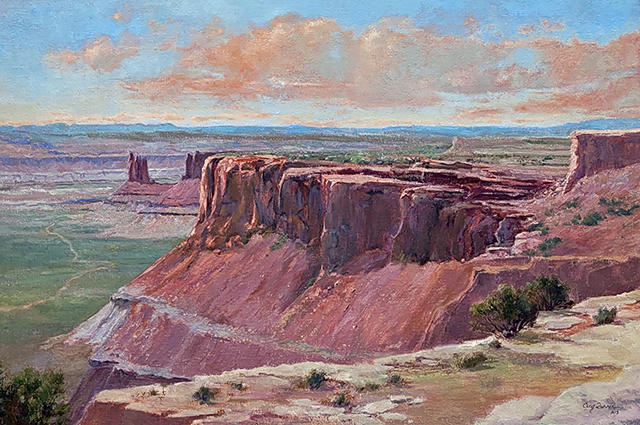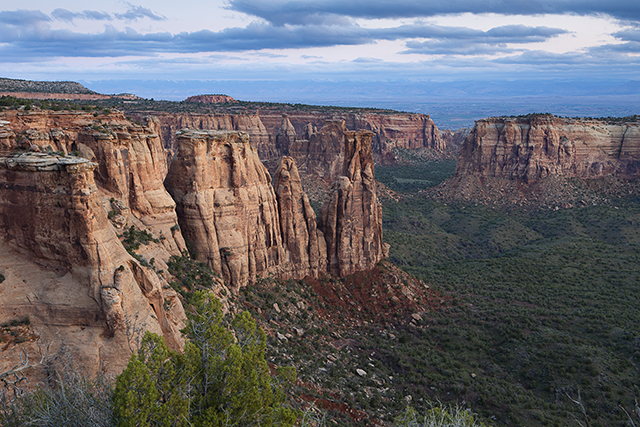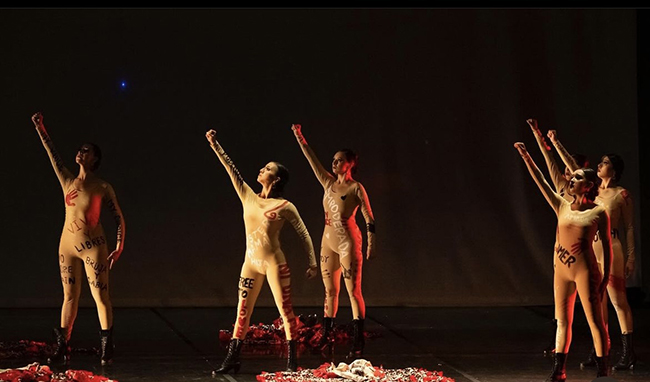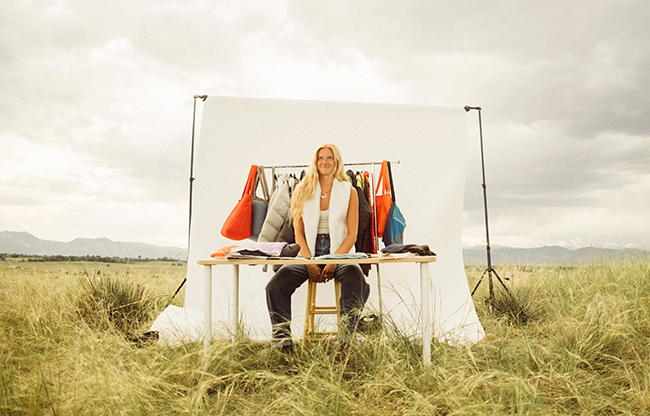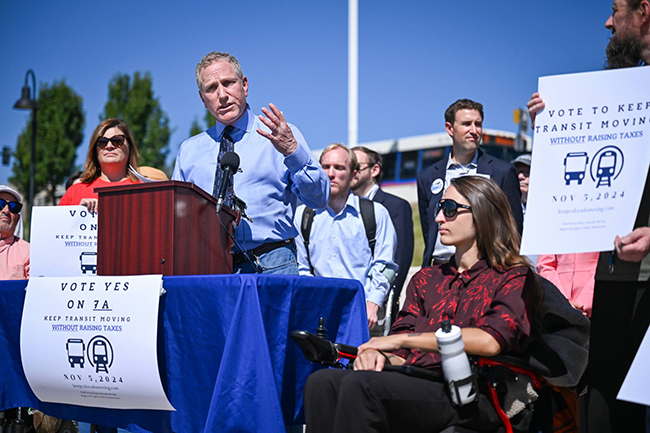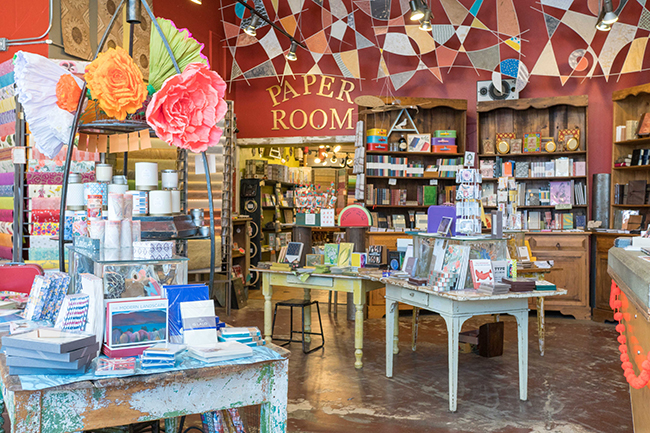Championing for Positive Change
19 Jun 2023
An afternoon with Boulder Mayor Aaron Brockett
By WENDY SWAT SNYDER

When we sat down to interview Aaron Brockett, he had just returned from Washington D.C., where he and a group of regional partners lobbied Congress for several initiatives—including an ambitious plan for a commuter rail linking cities along the Front Range. A year and a half in office, Brokett’s proactive political approach prioritizes sustainability as he champions policies for positive change—positive change that starts at home, on a personal level.
You live in a cohousing community called Wild Sage, where you helped build a community garden.
Cohousing is a worldwide movement that started in Denmark. It’s a wonderful community-oriented way to live. My wife and I were founding members of Wild Sage 19 years ago. It’s a one-block neighborhood with 34 units of stacked flats, townhouses and carriage houses. We have this lovely common house with a professional kitchen and a big dining room, a kids’ play area and two guest rooms, as well. The idea is, you can have smaller individual units and interact with your friends and neighbors in the common house or have a guest over for a few nights in one of the guest rooms. There are community meals once or twice a week and it’s a wonderful place to raise children because the kids just play with their neighbors. It’s a good mix.
You served on the city council from 2015 to 2021, when you were appointed mayor by your colleagues. What are some of the big issues you are collaborating on with this more progressive council?
We’ve been working hard on housing policy—this council is a group of people that really understands these twin issues of lack of housing affordability and the climate crisis. You have this issue where people work in Boulder but are often not able to afford to live here, so they’re living outside Boulder and commuting in, which has greenhouse gas emission issues. We’re trying to make sure there are opportunities for people to live and work here at a variety of price points and a variety of housing types.
What is the city doing to create more of those opportunities?
Changing the occupancy rate is one of the tools we’re working on. Currently, occupancy is limited to three unrelated people in most residential areas of the city. We’re looking at potentially changing that to four or five as a way to allow people to share costs and make housing a little more affordable, and to share resources. And it also makes a dent in the climate crisis because shared housing like that is going to have lower per capita greenhouse emissions as well.
Like many cities across the country, homelessness is a problem in Boulder.
We’ve been providing safe housing for homeless persons for years. We’re also looking at a Denver initiative called Safe Outdoor Spaces. These are ice fishing tents with heaters in them. It’s a way to give people an alternative to living in tents on the streets and along the creeks. It’s a lower-cost way of getting folks into a transitional housing situation while we’re working on finding more permanent housing solutions.
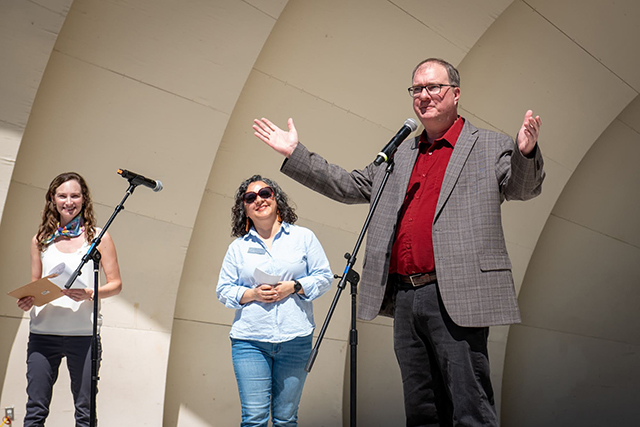
What sort of permanent housing are you working on?
We are bringing on a number of permanent supportive housing units each year. These would be apartments we’ve created in partnership with our housing authority, Boulder Housing Partners and the Boulder Shelter for the Homeless. We’ve created well over a hundred of these over the last few years, and they give people who have been experiencing homelessness a safe place to live and access to wraparound services if they’re experiencing a mental health issue or substance abuse issues. There’s counseling and treatment available for those issues as well. So, I’m really proud of how many of those we’ve put together.
And that’s a constant effort. We have another project called Bluebird Apartments that’s under construction right now that will offer, I believe, another 35 units of that permanent supportive housing, which is not to say that we’ve come close to solving the issue of homelessness here in town.
It’s a vast societal endemic issue. Unfortunately, we still have many unhoused folks in our community, a lot of that is because of the affordable housing issues I mentioned before, but also these other epidemics of untreated mental health issues and a lack of good, high-quality mental health treatments. Also contributing to the problem are substance abuse coming from the opioid epidemic and cheap and easily available methamphetamine for which we don’t have great treatments. So, we have these three issues resulting in quite a bit of homelessness in our city, in our region and across the country. But we are working constantly on a wide variety of fronts to minimize that and get as many people as possible into safe and healthy conditions.
What are some other issues you and the council are addressing with a more progressive approach?
A new program this council is working on that I’m really excited about, and something I’ve been championing personally, is a non-police-based emergency response program. It’s going to come online in the next two or three months. If somebody calls 911 or the non-emergency police line and they describe somebody who is having, say a behavioral health problem or crisis or exhibiting some problematic behaviors, but in a way that’s not threatening public safety, we would send out a social worker and EMT or paramedic to answer that call, rather than starting with the police. Programs in other cities like Denver and Eugene, Oregon, have shown that it’s an extremely successful way to de-escalate and diffuse a lot of common situations in the community. It also takes the burden off the police department, giving them more time to focus on more serious criminal activities.
What’s the status of your plans for a regional transportation system?
This is something that we’re constantly working on to improve with our regional partners, the Regional Transportation District (RTD), our neighboring cities, and Boulder County. A couple of initiatives I’ve been diligently working on are a bus rapid transit system between Boulder and Longmont. It’s a major commuter corridor, and we have almost all the funding lined up for a fast, high-quality, high-frequency transit line. Pieces of it will start construction later this year, and we’re hoping to get that completed in the next few years.
A similar project from Boulder to communities like Erie, Lafayette and other eastern points is further down the pike, so to speak, but we’ve got funding for preliminary steps and studies.
And then, another one I’m really excited about is the prospect of a Front Range passenger rail. With the resurgence of Amtrak and the additional funding we’ve gotten from the infrastructure bill at the federal level, we’re working on a partnership with cities up and down the Front Range, and federal and state governments. We envision a train that would go from Fort Collins all the way to Pueblo, running through Boulder, Denver and Colorado Springs.
We’ve gotten a great reception from our senators and congresspeople during our trip to D.C. That’s a few years away as well, but all the conditions are coming together to make that a reality. I think it will be a phenomenal, transformative transportation option for our region.
How are the stressors on the Colorado River impacting Boulder?
Fortunately, we’re very well positioned here in the city of Boulder because we have a diversified portfolio of water resources, and we also have very senior water rights. We get about a third of our water from the Western Slope. According to our water engineers, we could manage a curtailment of those supplies pretty readily due to the senior nature of our water rights and the diversification I mentioned. We keep a close eye on this, and we do have a drought plan where we can institute additional water conservation measures, which should be relatively manageable. But our usage here in Boulder has been roughly flat since 2005 and significantly down from what it was in 2000.
So, we’re in good shape as a city, I’m happy to say.

